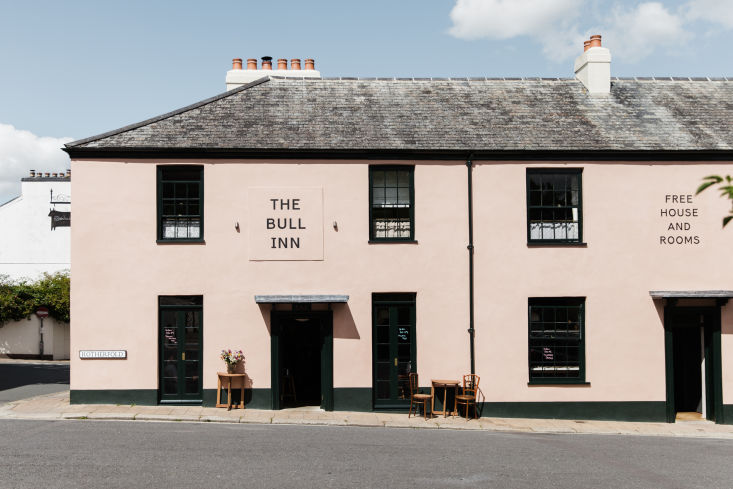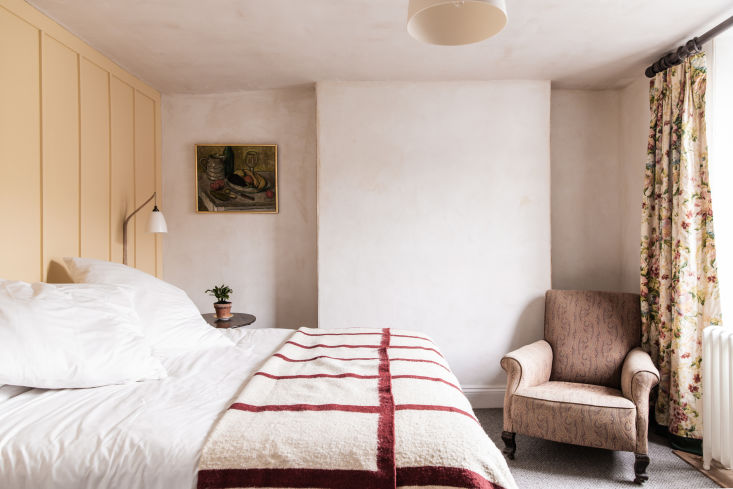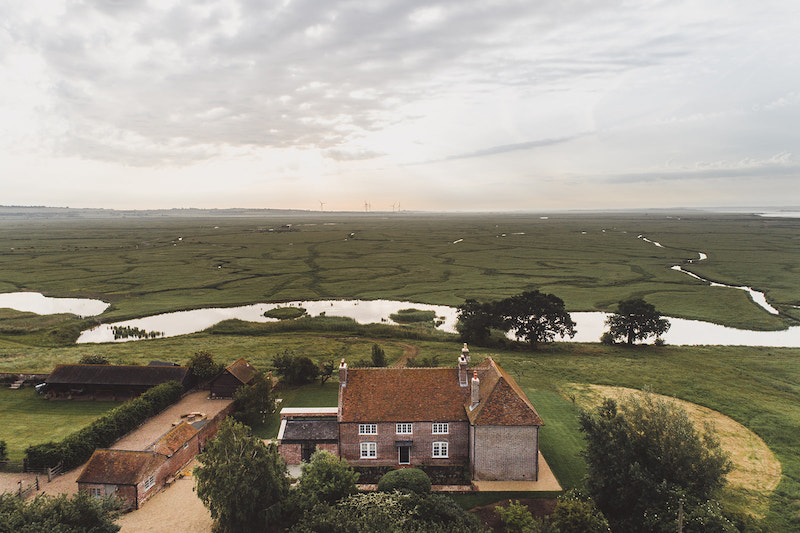The Bull Inn is an eco-oriented, award-winning hotel and restaurant in Totnes—an ancient market town in South Devon with an independent spirit. The new owner is the ethical entrepreneur Geetie Singh-Watson, who opened her first organic pub in north London over 20 years ago. She has since been awarded an MBE for services to the organic pub trade: “The whole point of setting up my pubs in the very first place,” Singh-Watson explains, “was for people come in and have a great meal and a great time and then discover the ecological values that underpin it. I want to show people that you don’t need to diminish your life in order to have a much lighter footprint on the planet.”

Singh-Watson worked with local architect Jackie Gillispie to restore the Grade II-listed, centuries-old building. “One of the things I love about reclaiming and preserving what you’ve got is that it makes decision-making so much easier,” she explains. In the bar area downstairs, very little of the original structure existed, so they were able to strip out an old breeze-block wall along with several layers of concrete plaster and start again with a breathable layer of natural lime-plaster. “It’s a much happier building for it,” she says.

Singh-Watson grew up in a rural commune in the 1970s. She attributes her “absolute conviction” that “anything can be done with reclaimed materials” to her upbringing: “My mum was really passionate about building, and most of my childhood was spent talking about natural and craft-based building projects. When I was about seven, she bought a tumbling down cottage and made it her hobby to restore it by hand, entirely from salvaged materials. And that’s what we did together throughout my childhood, gathering old building materials. She was always valuing that deep craft in the materials that nobody seemed to appreciate at the time.”
Consequently, Singh-Watson has approached the interiors with a committed sense of stewardship. “Upstairs, we have kept beautiful patches of old wallpaper, and I was adamant that none of the lath and plaster should be touched unless it was absolutely necessary.” The shape and layout of the rooms have been dictated by the existing structure of the building, and by the historic remnants uncovered along the way. (“It drove the architect nuts!” she concedes.)

Singh-Watson didn’t rely on precedent imagery when designing the rooms. Instead, she “keeps [her] own counsel,” allowing the process to dictate the style: “As we started to uncover these bits of lovely wood or plaster or wallpaper I started to think: OK, so that would go beautifully with white linen, or that room is quite dull, it needs a loud curtain … The whole thing is forming in my mind as it’s happening, which makes it feel less calculated and formulaic–more human, I think.”







Above the painstakingly restored rooms is an attic full of state-of-the-art devices that connect to solar panels on the roof and an experimental heat-recovery system in the kitchen. This provides hot water and heat on the ground floor, filtering hot air and pumping it back into the building so nothing is sent out into the atmosphere.


As we speak, the staff are having a set of front-of-house aprons made. Unable to find a suitable, sustainable alternative, Singh-Watson has asked employees to bring in their own pre-loved jeans which will be transformed into workwear by a local group called Mend Assembly. “It’s affordable, ethical, and practical,” explains Singh-Watson, “but there’s also huge value for the team, who really engage with the process. And it creates a sense of loyalty that ultimately creates a greater pleasure for them in their employment here.”
From the staff aprons to the plastic-free kettles in every room – the thought and depth of knowledge behind each design decision is inspiring—and we haven’t even touched on the organic food and drink offering. For Singh-Watson, the constant challenge is working out how to inform people about these choices: “Guests come all this way to get away from daily life and to wallow in their pleasures, rather than worry about life’s burdens. How do you let people know you’re doing all this without lecturing, or without it becoming tedious?”
Perhaps the simple answer is to come and try it for yourself.
Kitchen of the Week: A Sleek Modern Kitchen with a Hippie Heart
Midcentury Modernized: A Sensitively and Sustainably Remodeled 1960s Gem





Have a Question or Comment About This Post?
Join the conversation